June 24 - 30, 2018: Issue 365
Roads To Pittwater: The Wakehurst Parkway Along Old Oxford Falls Track
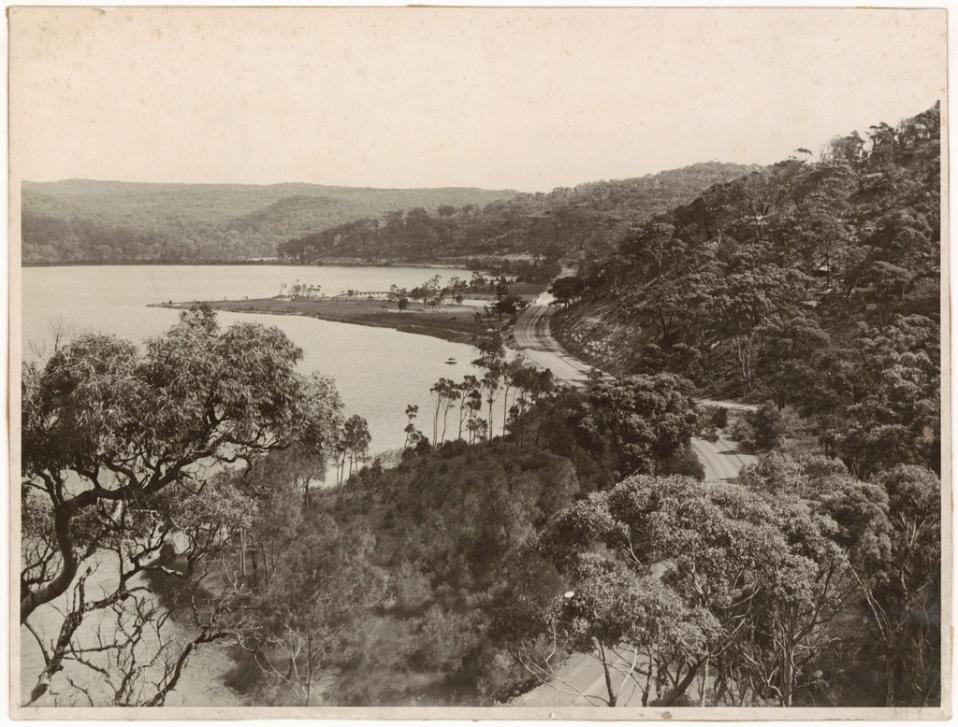
The Oxford Falls at Manly.
Two miles from the terminus of the Manly - Brookvale tram. On the opening of the tram to Narrabeen today the falls will be brought within easy walk of the terminus. These falls, which are little known to the average residents of Sydney, are among the most beautiful scenes to be found in this part of the State. The upper fall is about 200ft crashing into a deep valley, to which access is extremely difficult. The bottom falls continue in a series of cascades, thence continuing over rugged country to Narrabeen Lake.
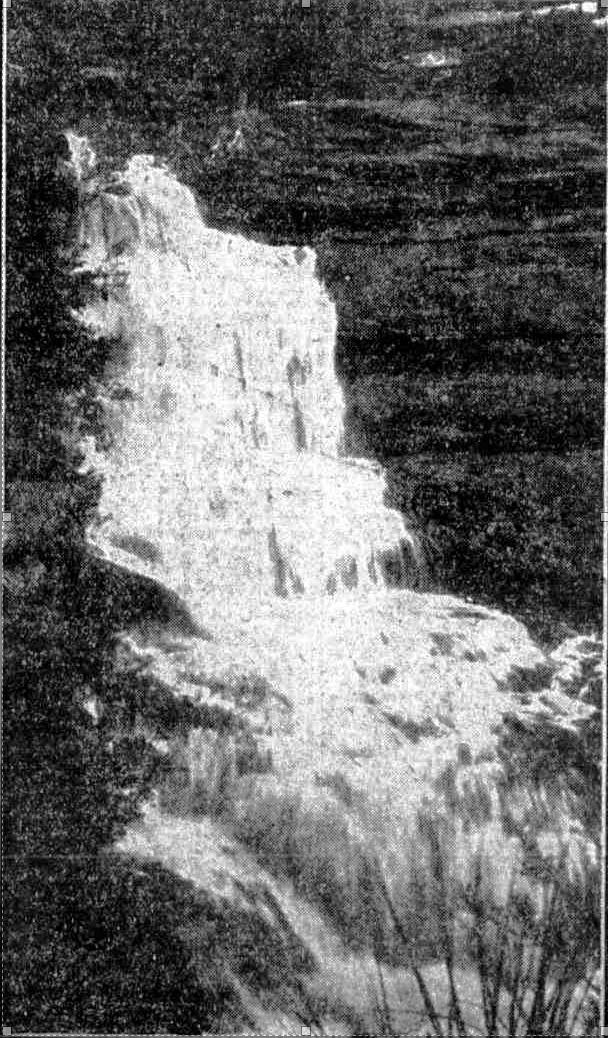
THE OXFORD FALLS AT MANLY. (1912, August 3). The Sun (Sydney, NSW : 1910 - 1954), p. 12. Retrieved from http://nla.gov.au/nla.news-article228826044
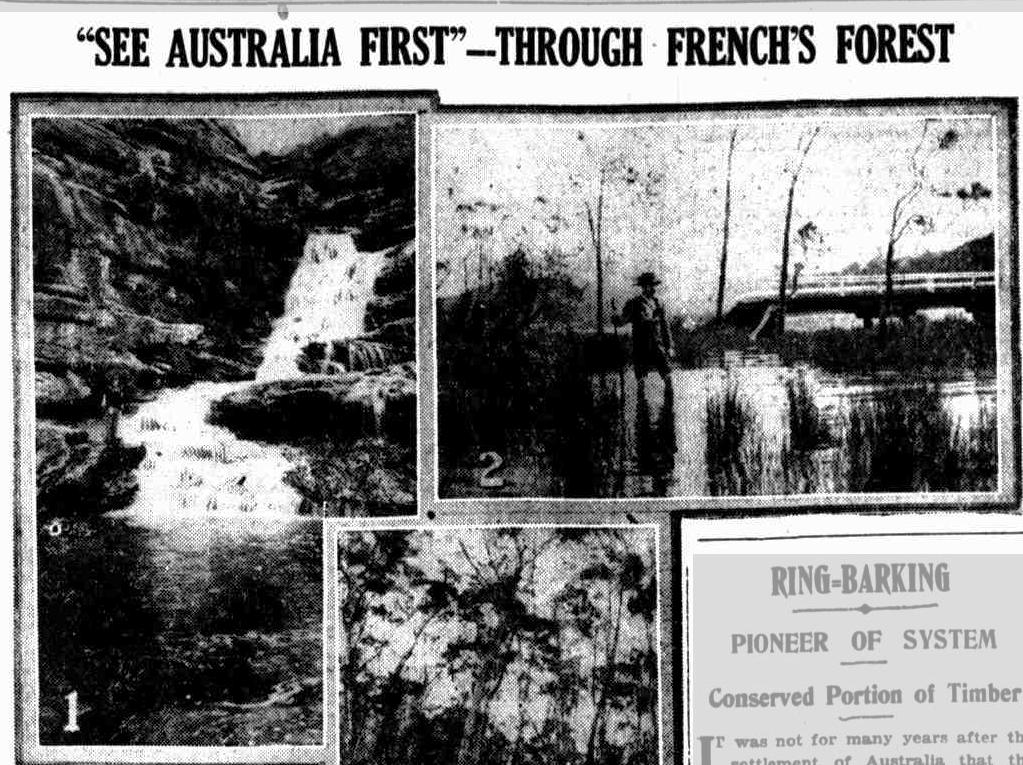
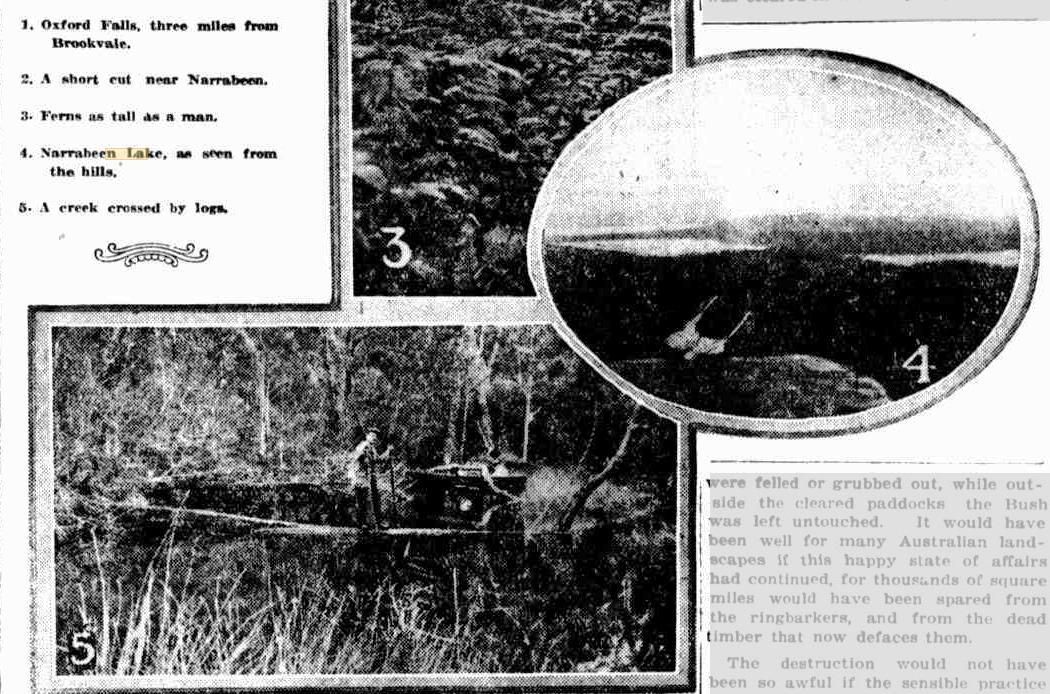
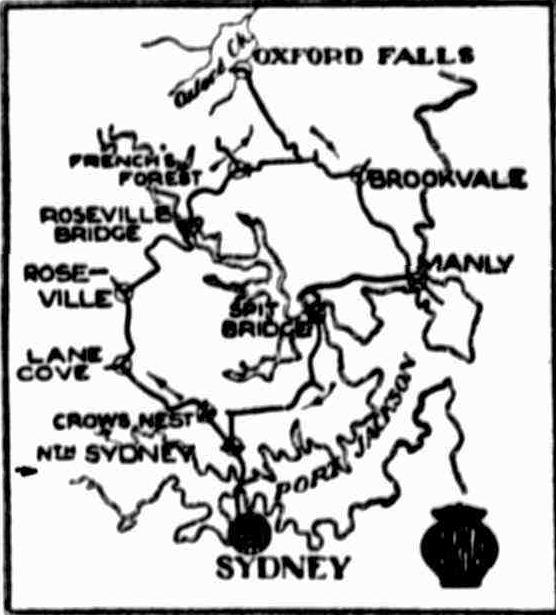 Manly will be en fete this week-end and the N.R.M.A suggests that motorists visiting the district arrange their trip to Include a visit to the Oxford Falls In French's Forest.
Manly will be en fete this week-end and the N.R.M.A suggests that motorists visiting the district arrange their trip to Include a visit to the Oxford Falls In French's Forest.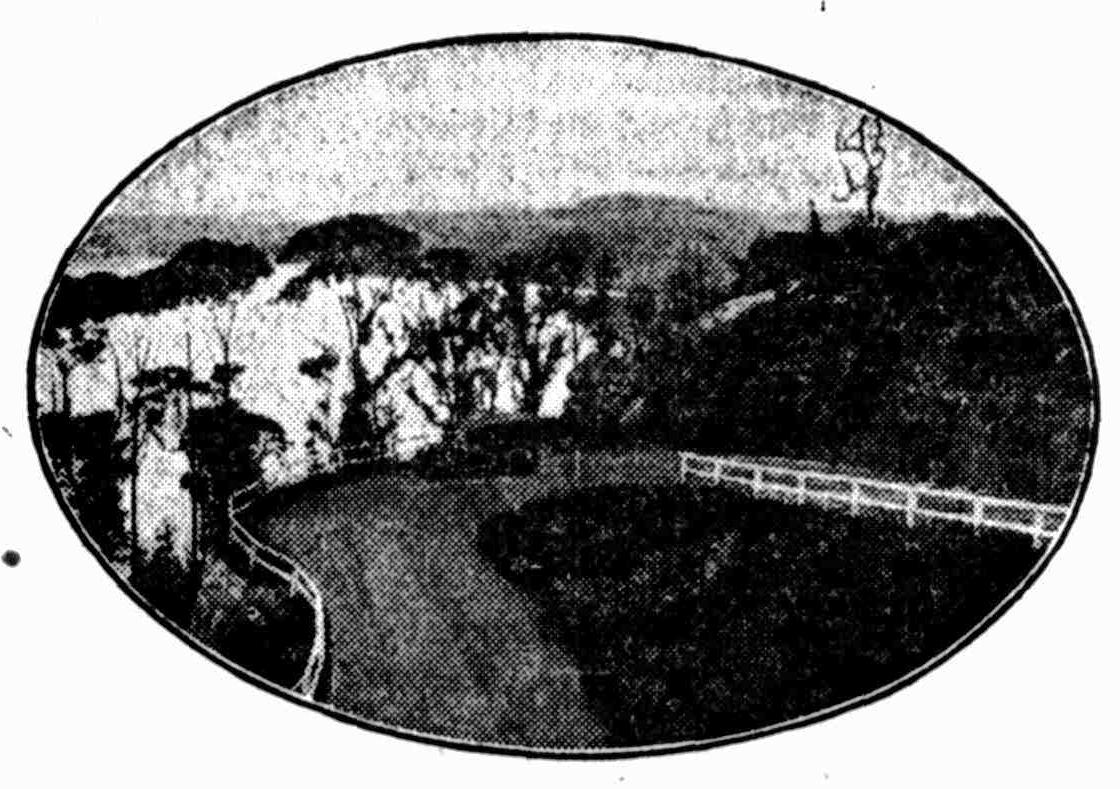
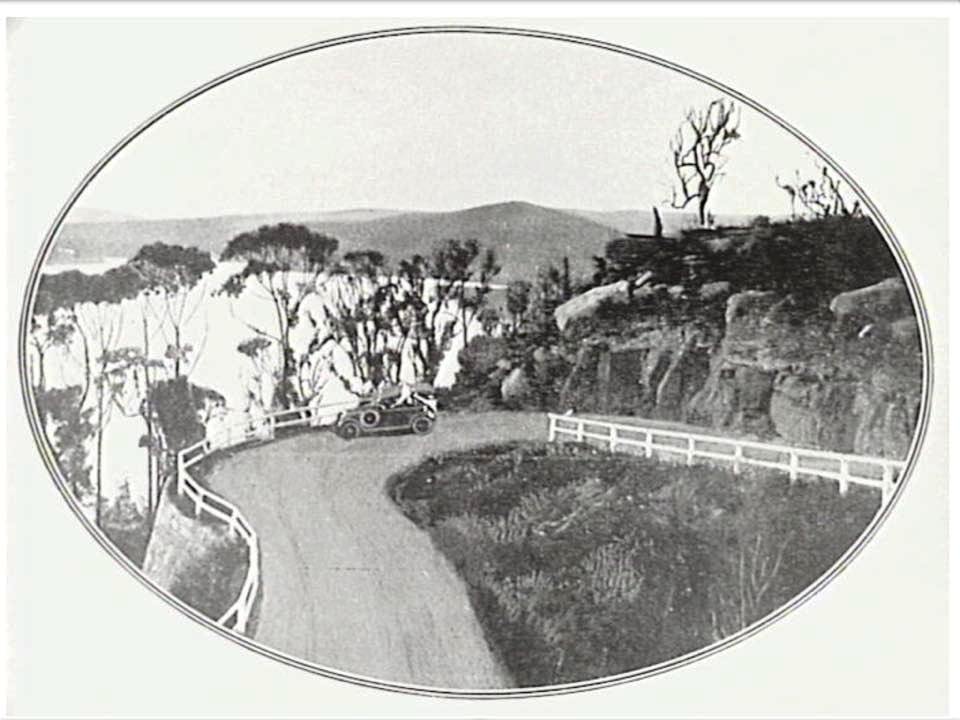
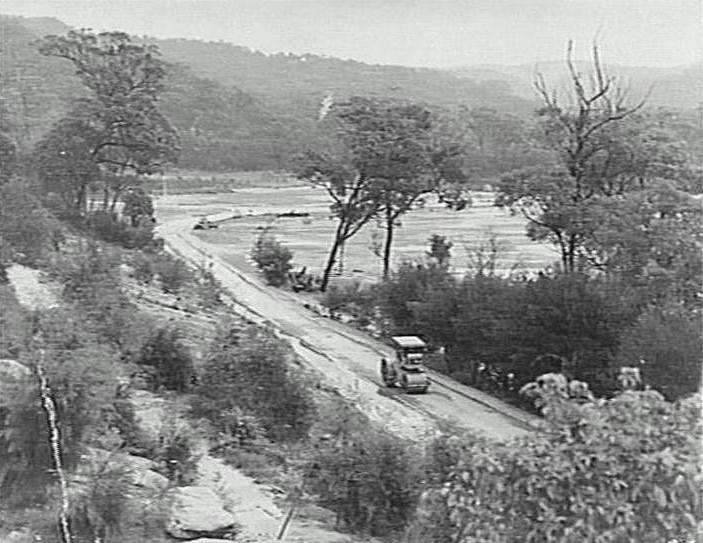
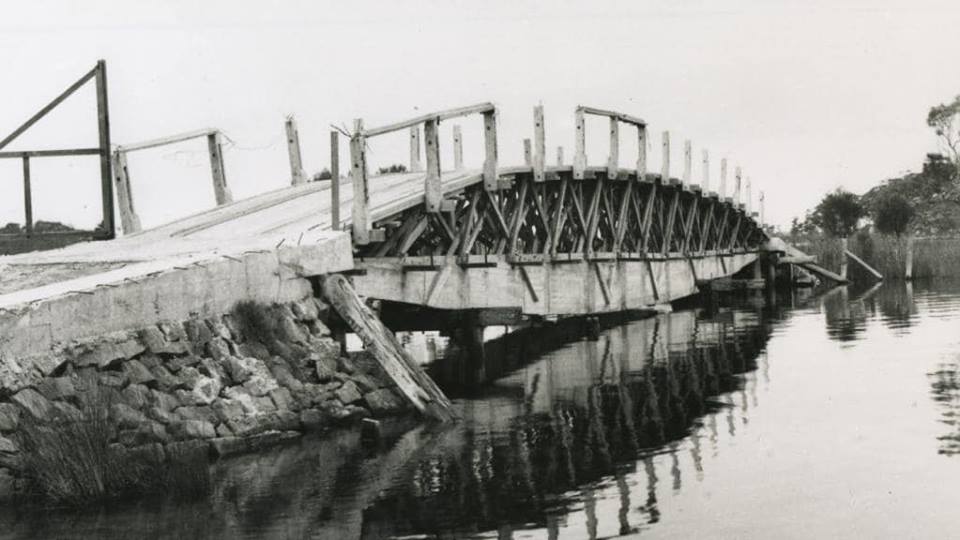
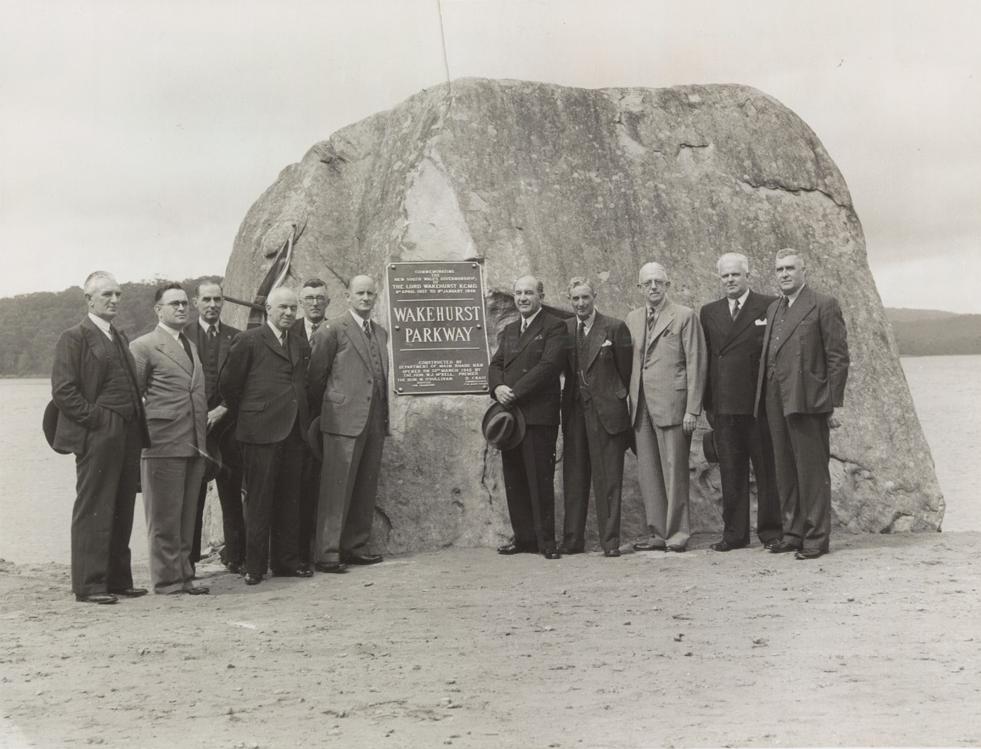
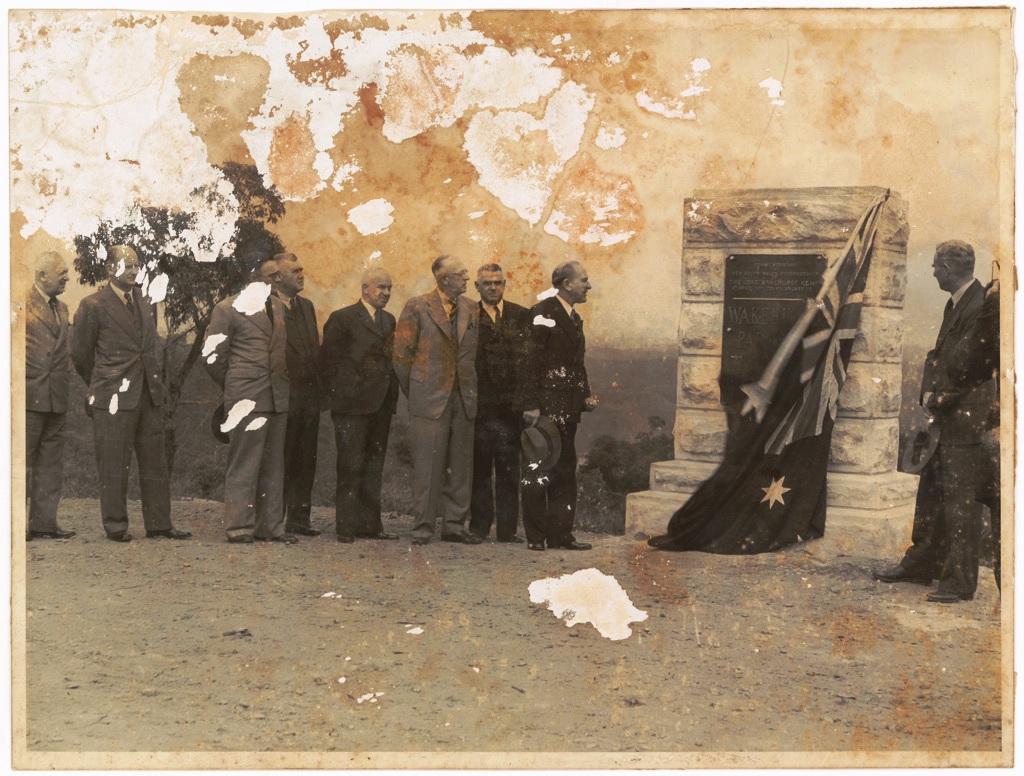
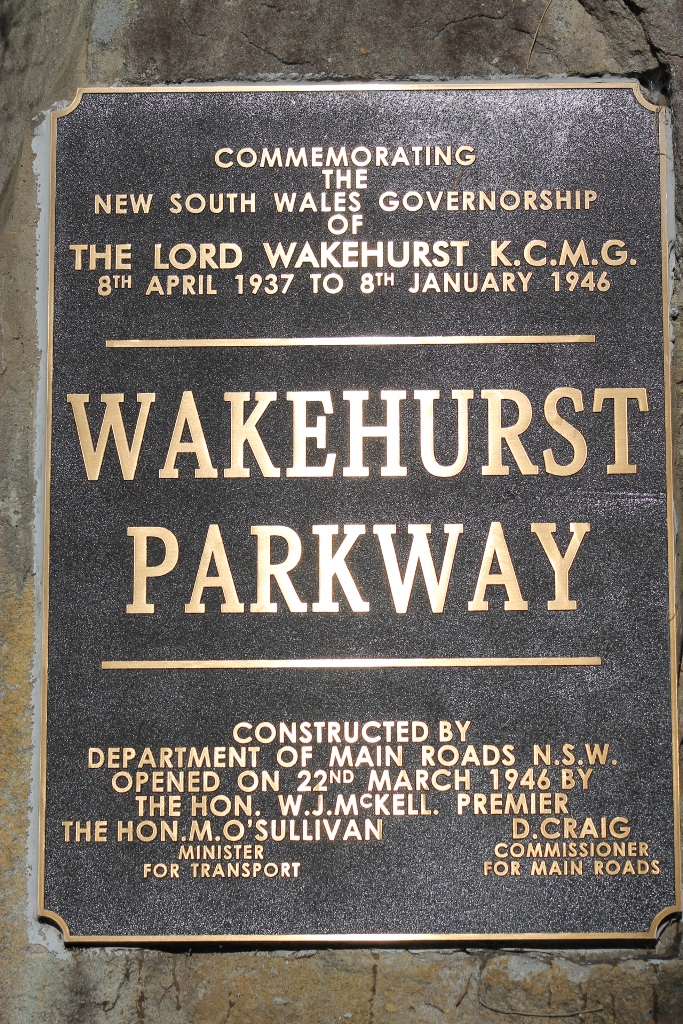
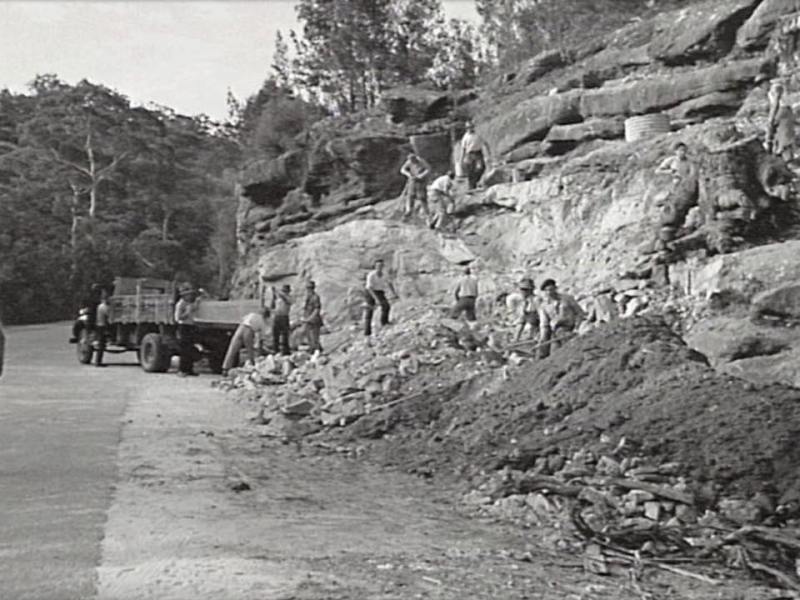
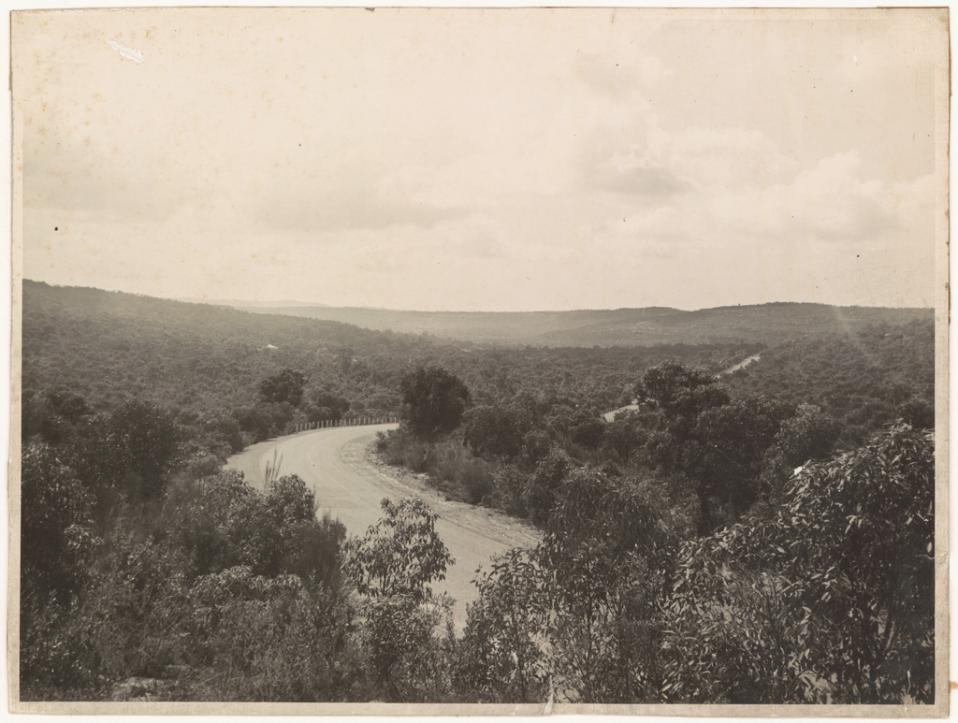
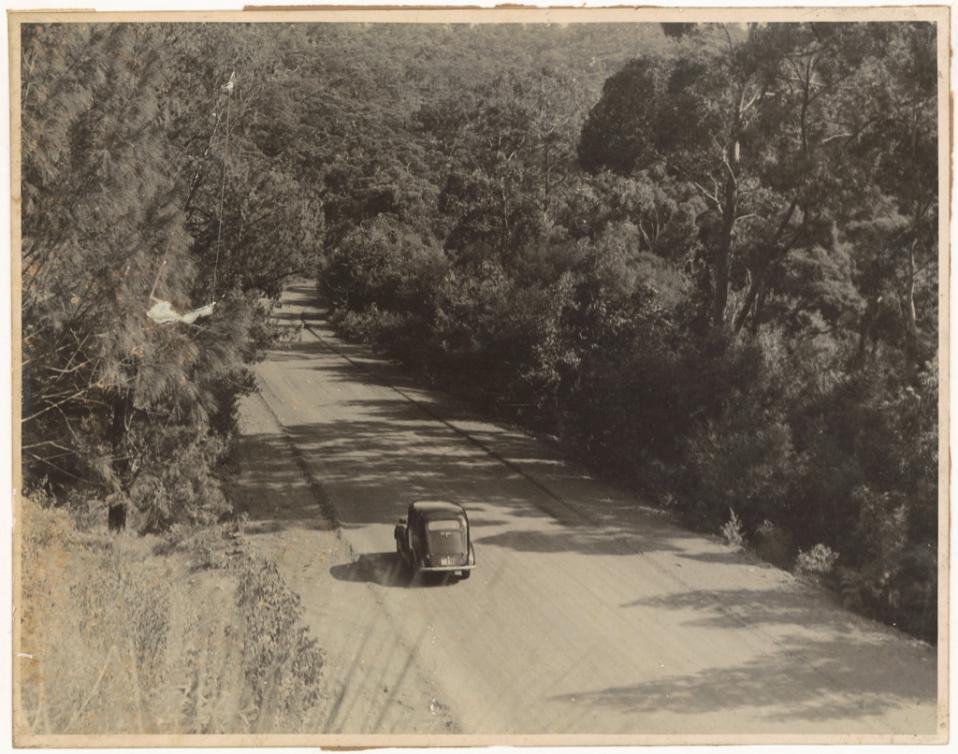
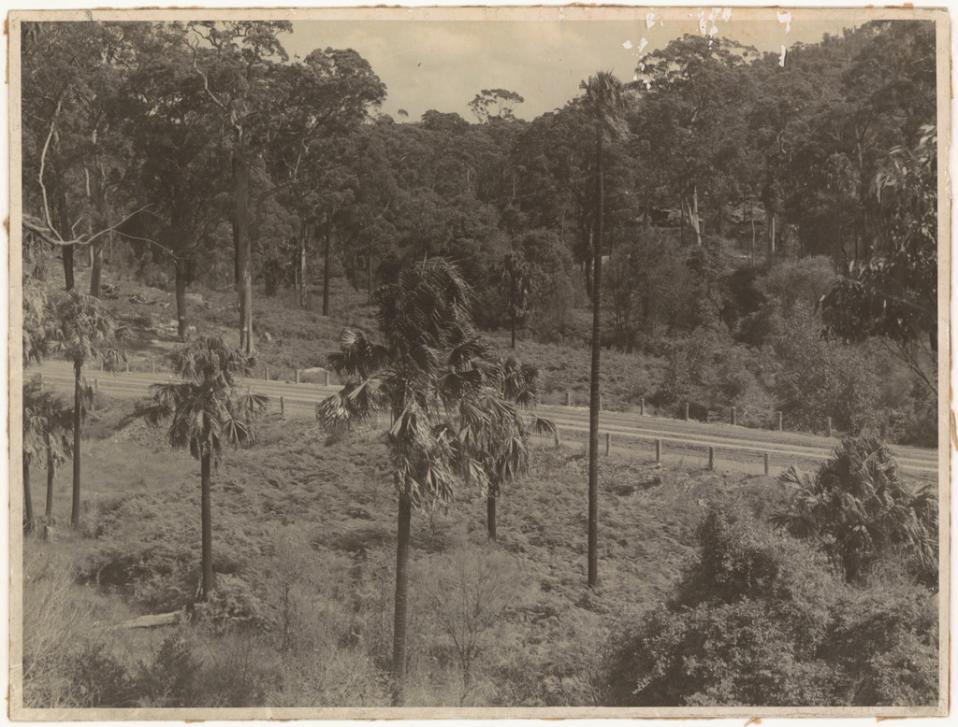
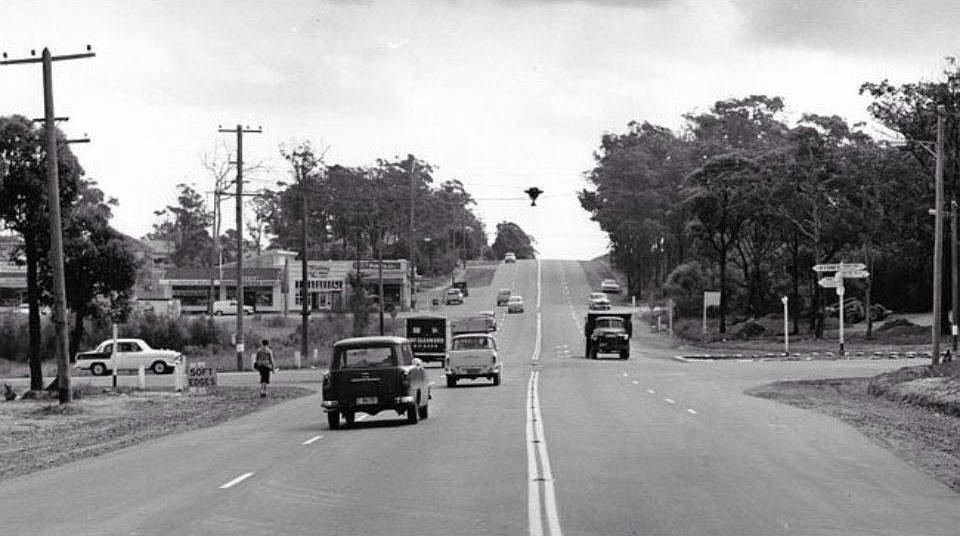
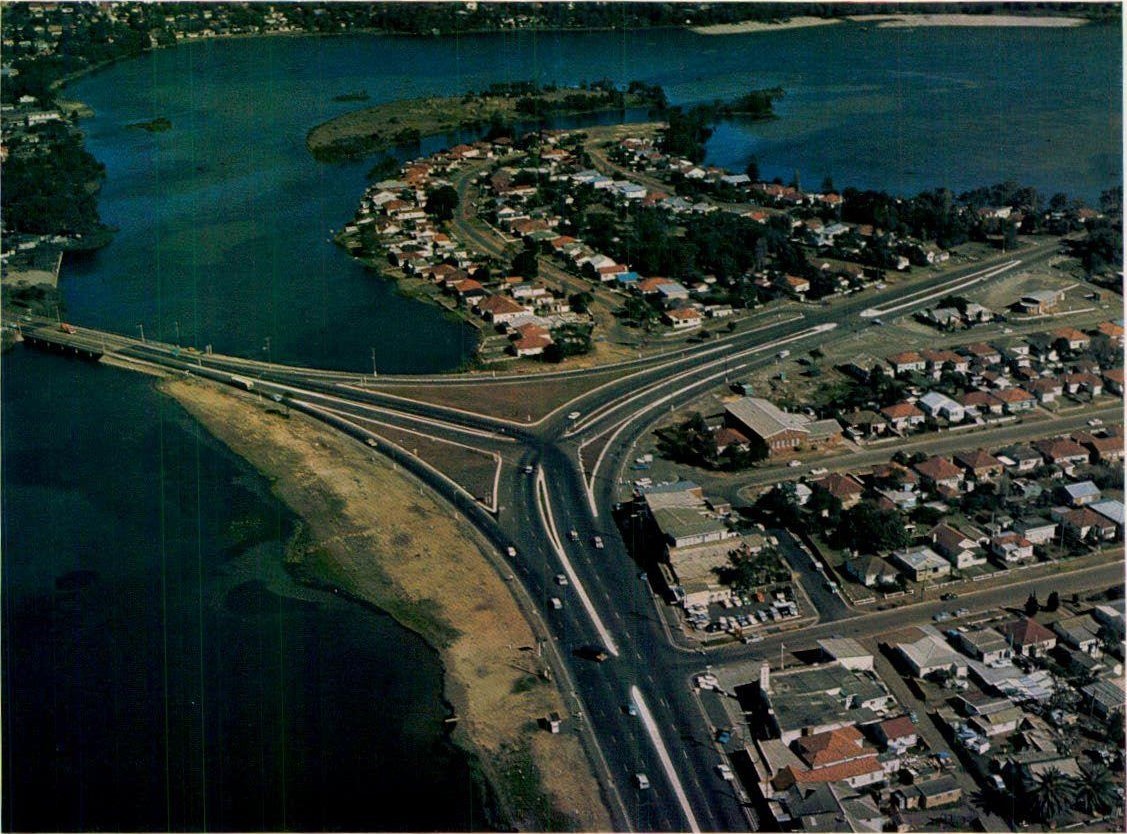
The First Roseville Bridge
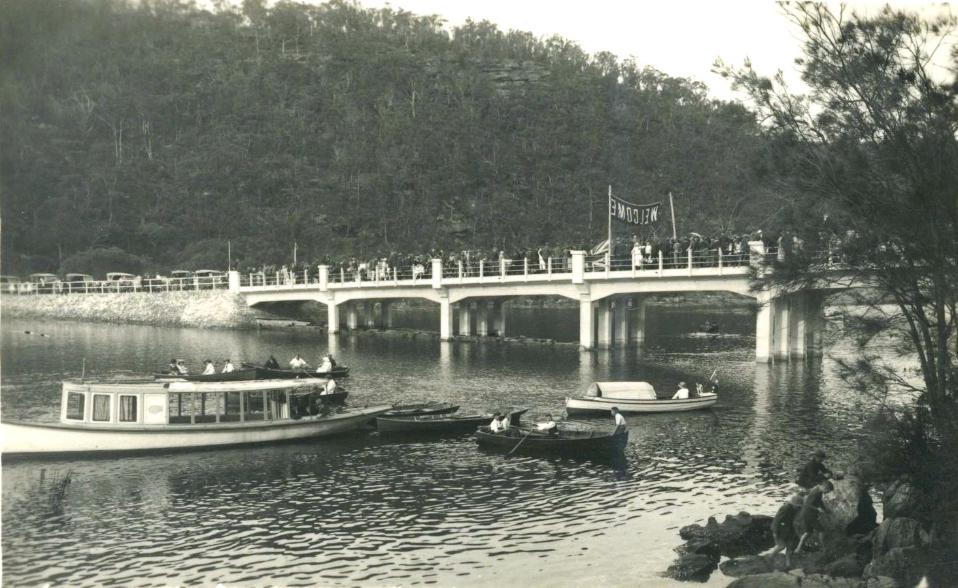
The First Roseville Bridge
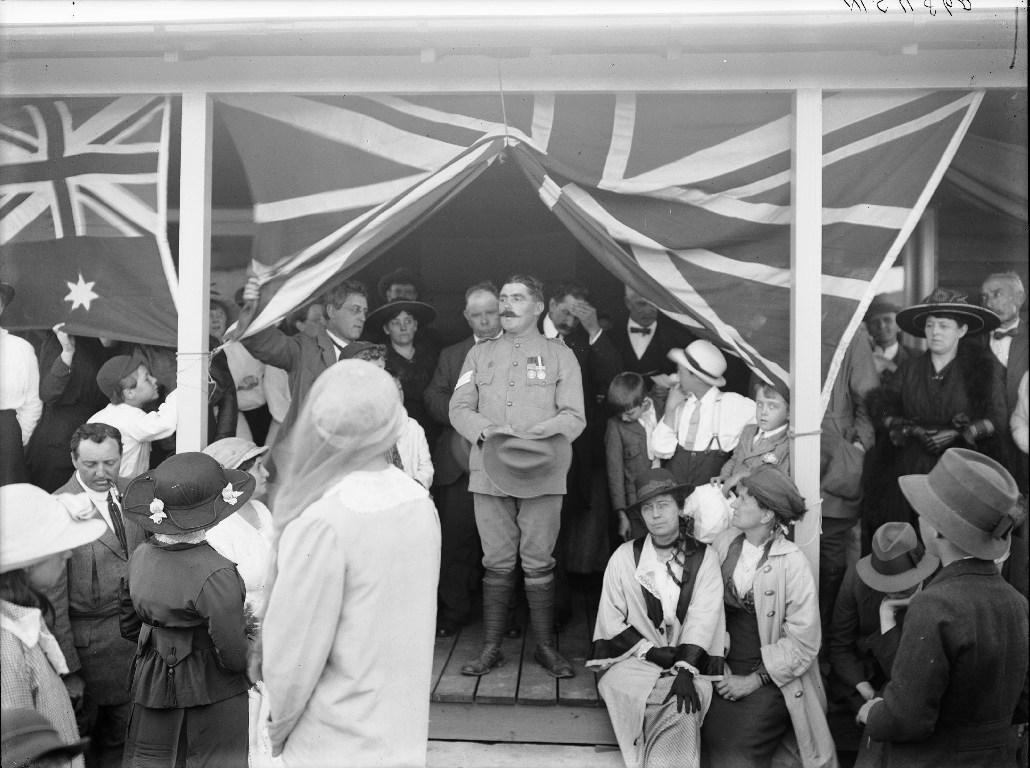
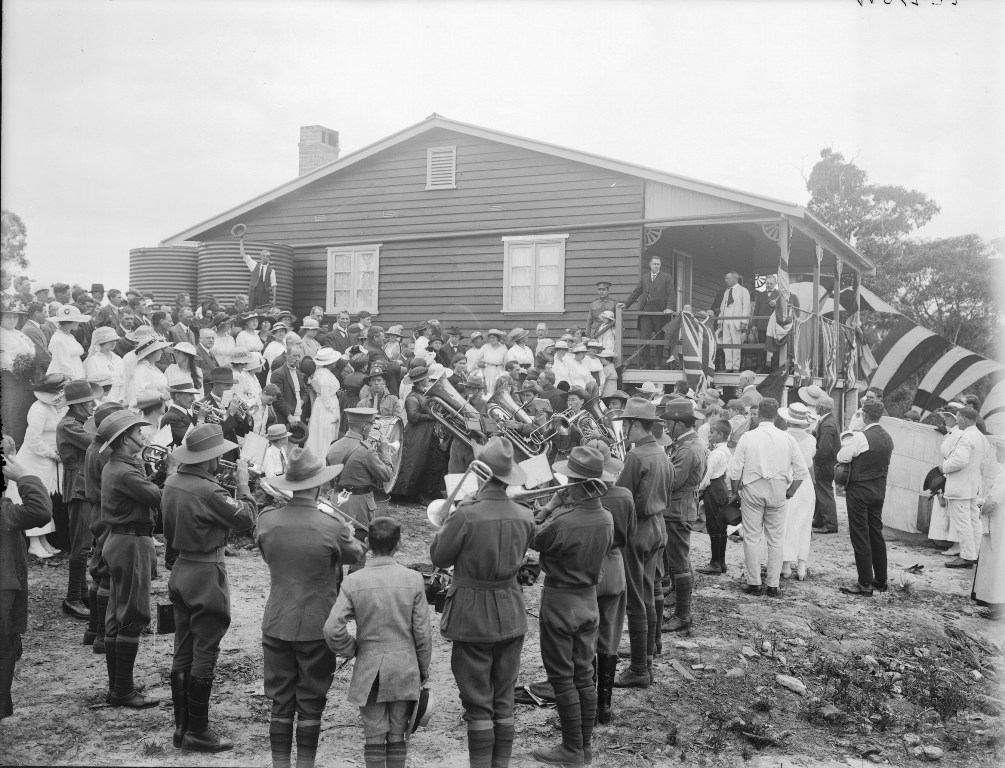
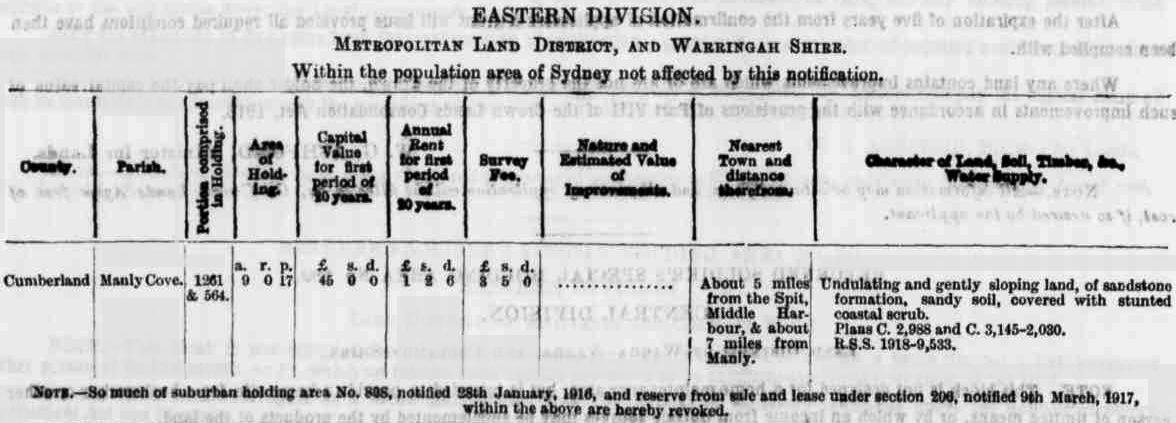
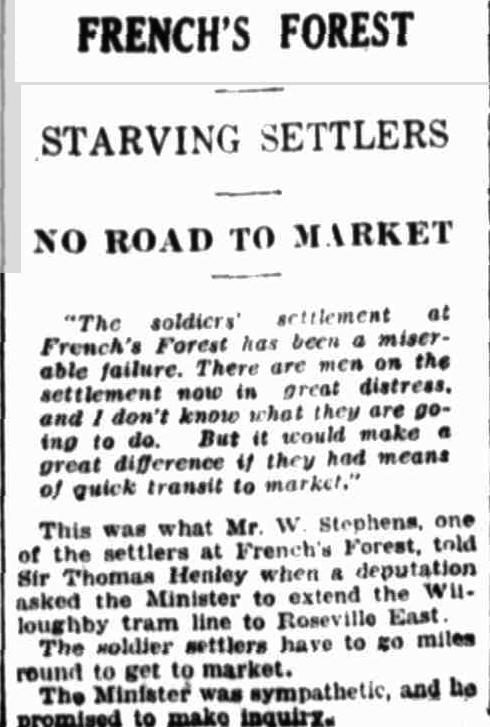
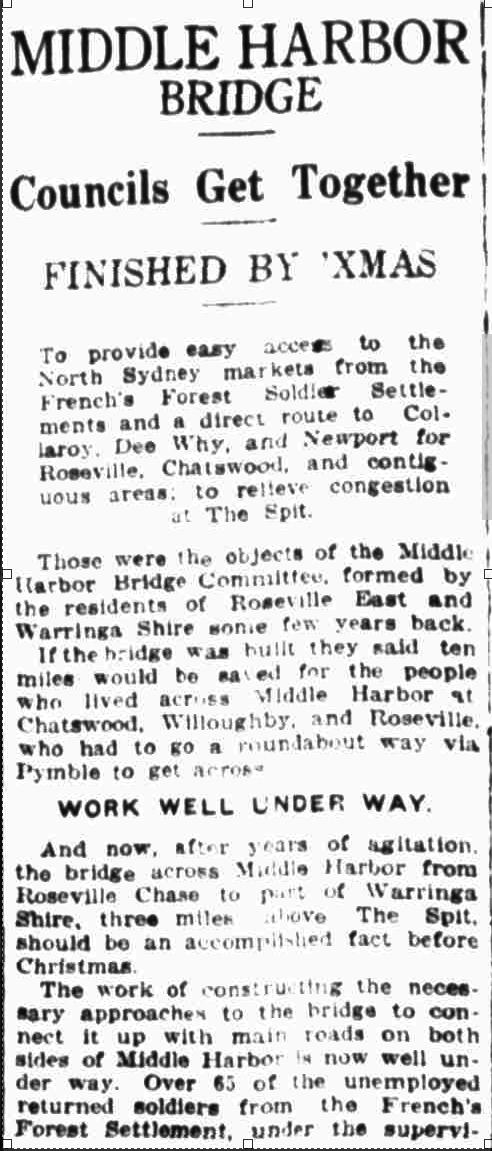
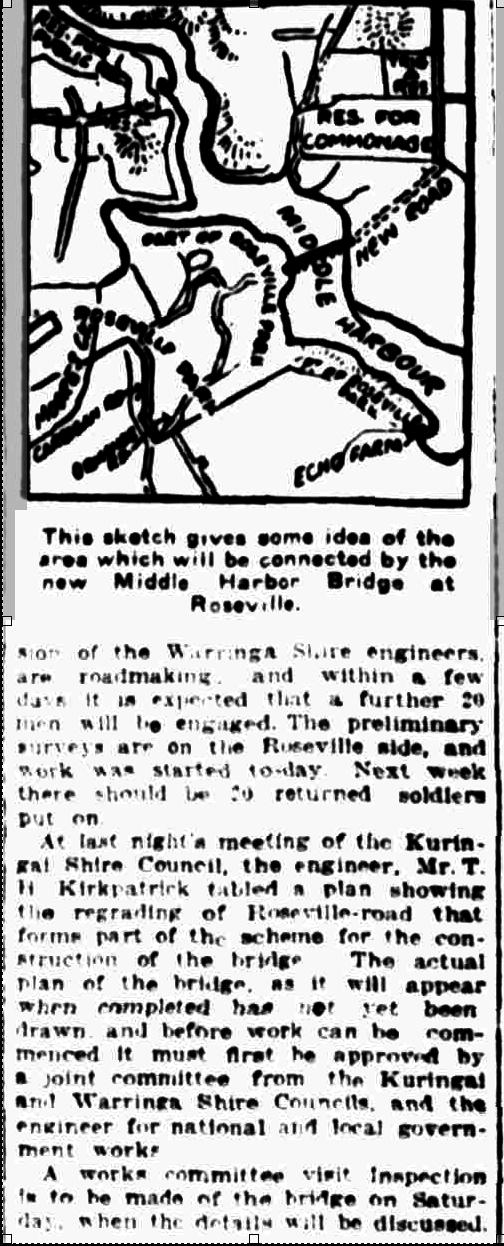
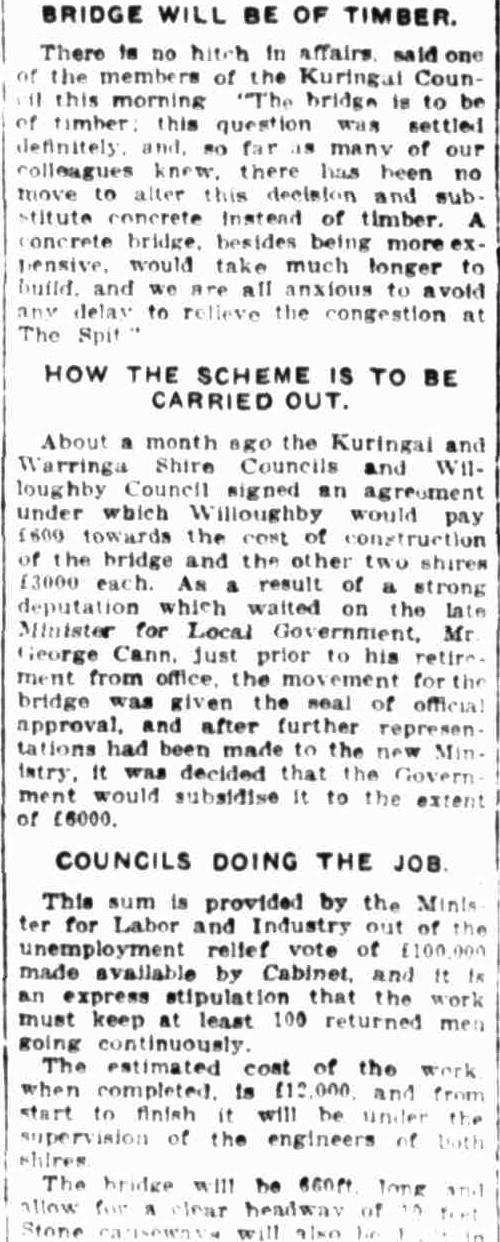
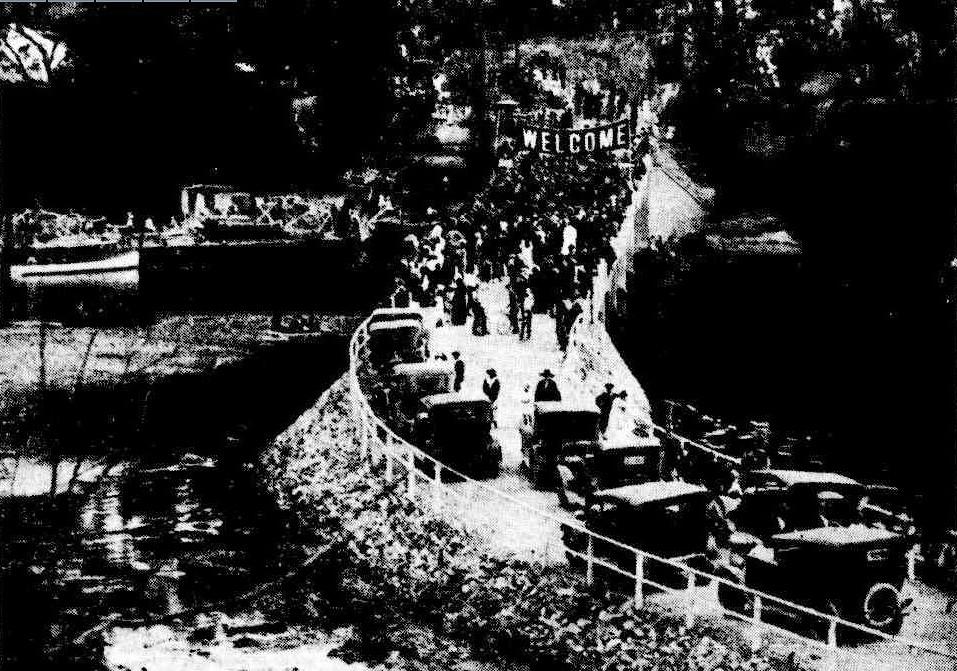
Above: OPENING OF THE BRIDGE ACROSS MIDDLE HARBOUR. THE CEREMONY NEAR ROSEVILLE ON SATURDAY, AFTERNOON. OPENING OF THE BRIDGE ACROSS MIDDLE HARBOUR. (1924, September 22). The Sydney Morning Herald (NSW : 1842 - 1954), p. 12. Retrieved from http://nla.gov.au/nla.news-article16174040
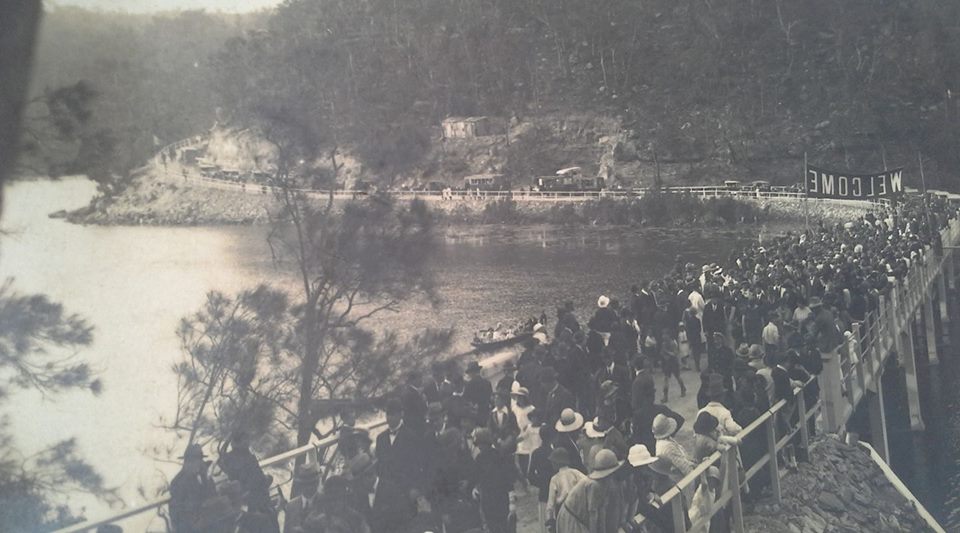
Below: OPENING OF THE MIDDLE HARBOUR BRIDGE. Several thousand people attended the official opening on Saturday afternoon of the –Middle Harbour Bridge between French's Forest and Roseville. After the opening ceremony, which was performed by the Premier, Sir George Fuller, hundreds of motor cars passed in procession over the bridge. Sir George Fuller said the new bridge would prove an important link between the northern suburbs and the important beaches on the northern side of Sydney Harbour, besides substantially assisting settlers in French’s Forest. OPENING OF THE MIDDLE HARBOUR BRIDGE. (1924, September 24). Sydney Mail (NSW : 1912 - 1938), p. 10. Retrieved from http://nla.gov.au/nla.news-article169149144
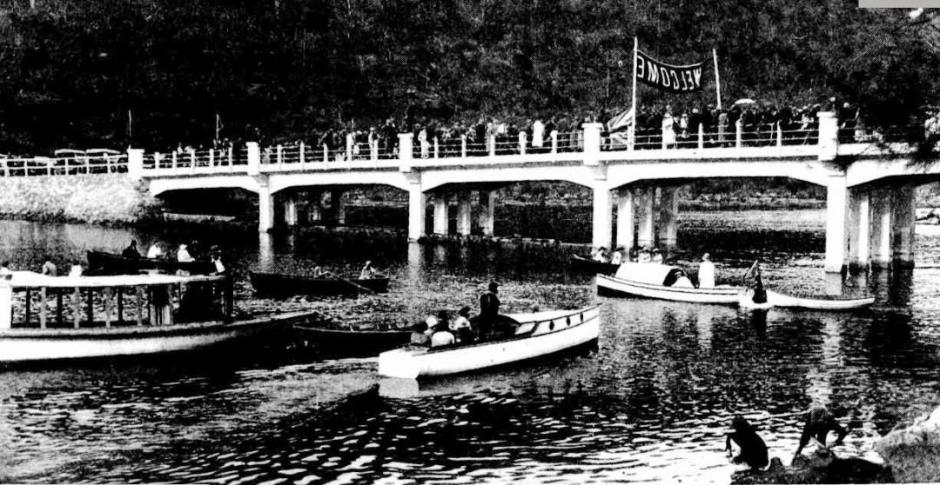
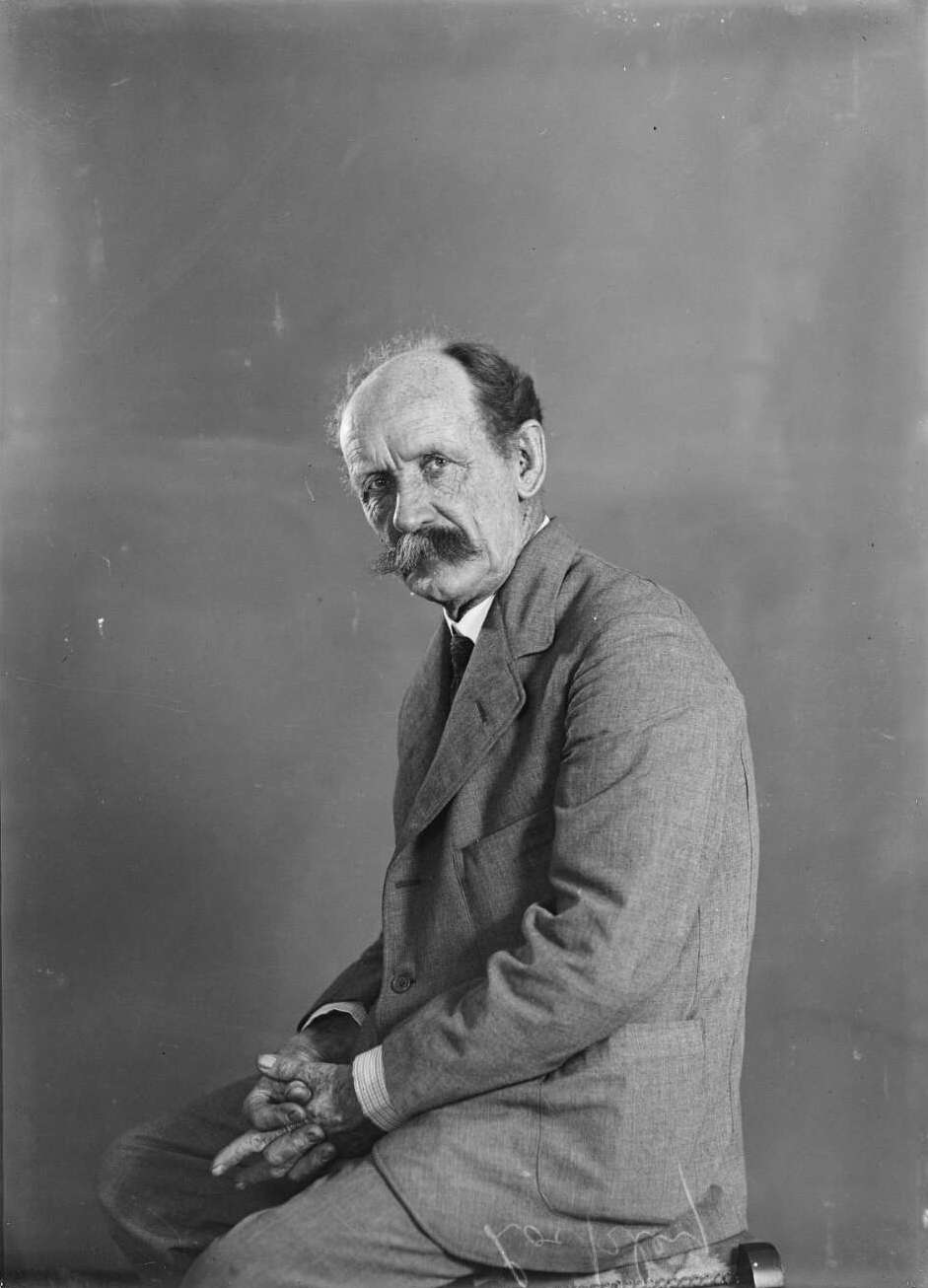
FOR CITY GIRLS holiday home
MEMBERS of the City Girls Amateur Sports Association have completed negotiations for a week-end holiday house at Narrabeen. "Palm Cottage" is an ideal place for a holiday, with the ocean in front and the big lake at the back. The creeks, too, offer pleasure to those whose fancy turns to quiet, inland waters. Mr. T. West, who built "Palm Cottage," went to Narrabeen in 1884, and from almost the whole coastline chose the site because it provided such an unusual vista of the sea. The house will accommodate 12 girls for each week-end, and it will probably be used for holidays also.
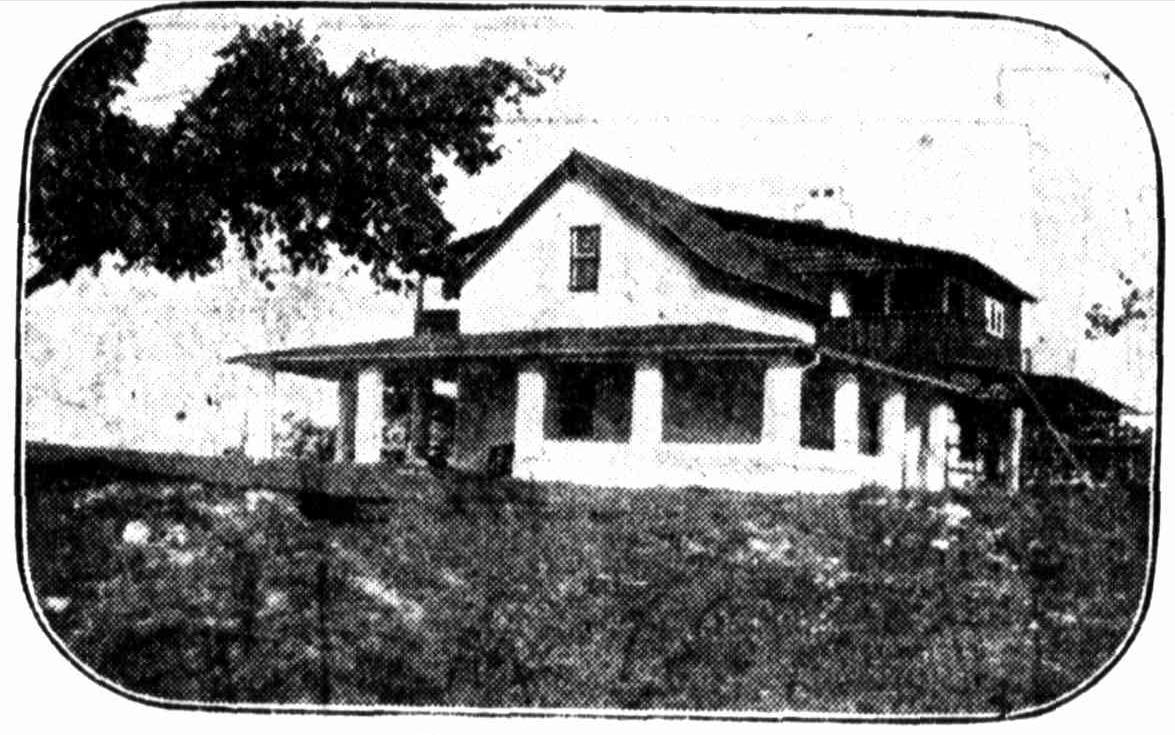
PALM COTTAGE The house at Narrabeen which has been secured by the City Girls' Amateur Sports Association for a week-end resort.FOR CITY GIRLS (1926, March 1). The Sun (Sydney, NSW : 1910 - 1954), p. 13 (FINAL EXTRA). Retrieved fromhttp://nla.gov.au/nla.news-article224055821
City Girls
New Holiday House At Narrabeen
PALM Cottage, one of the oldest houses In Narrabeen, Is to be the scene of many happy weekend parties for the City Girls' Amateur Sports Association. The cottage is large, and rambling, surrounded by wide verandahs, and stands on a bill, overlooking the ocean beach on one side and the Narrabeen Lakes on the other. It is an ideal place for large parties of club girls, the ample balcony space making It possible to accommodate unlimited numbers of camp stretchers for sleeping out, while a specially glassed-in portion will lend itself to the use of long, trestle dining-tables, to seat at least 20 girls.
The lawns surrounding the house are excellently suited for circles courts and basket-ball. Already a number of clubs affiliated to the C.G.A.S.A. have booked up week-ends well into the winter, for the colder weather will make no difference, as the charm of boating on the lakes and tramping into the woods surrounding them will afford sufficient interest as a substitute for the joys of surfing. Each girl, with a minimum number of eight, will be charged five shillings for a party. At present there is only accommodation for twelve, but, as the popularity of Palm Cottage grows, the association will be prepared to arrange for further accommodation. City Girls (1926, March 11). The Daily Telegraph (Sydney, NSW : 1883 - 1930), p. 4 (The Daily Telegraph Woman's Supplement). Retrieved from http://nla.gov.au/nla.news-article245839929
City Girls
EASTER CAMP AT PALM COTTAGE, NARRABEEN
ONE of the campers at Narrabeen writes : — We are having a wonderful time here in our new holiday house at Narrabeen. There are twenty of us comfortably housed in this quaint old rambling home, surrounded by wide verandahs and balconies. You can imagine our excitement over, it all, and our anxiety to take full advantage of every privilege offered. Of course, we decided on sleeping out, and it was not long before we wore in the land of nod.
Waking in the early morning as fresh as daisies, we were confronted with a view of wonderful bounty from either side of the balconies. The wide expanse of ocean on one side, and, in decided contrast, the pretty Narrabeen Lakes on the other, brought forth exclamations of delight.
On our first evening we gave "Father" (that is, Miss Mallard, as you know), a surprise dinner party. We decorated the dining-room with gay-colored streamers and fancy paper and balloons, and placed a lovely box of linen handkerchiefs at "Father's" seat, just to show how much we appreciate her kindness. Speeches wore made during dinner, and "Father" spoke beautifully about the association, and made us all feel very proud of being members. The pictures were the next excitement, followed by a dance, but it was not until the mystic hour that the real fun began. Everyone's bed was short-sheeted, and pillows floured, and some young imps tied a rope to the bed-clothes of "Nurse" and "Purser," and as soon as they were nicely settled in bed the rope was hauled up from the balcony, and away went their bedclothes. Then "Father" took a hand, and gave chase to her naughty children, and you may guess it was some time before peace was restored.
To-day, being Sunday, we are taking things quietly. Some are at church, others are Hurling, while a few are taking a long walk. There is much to make one and all happy, but time is flying, and our holiday is coming to an end. Only a day and a half left. Time rushes on occasions such as these. We are enjoying each minute of our stay. In my wildest dreams I had no idea that a party of girls could have such an enjoyable time together. I am glad I have joined the City Girls' Amateur Sports Association. City Girls (1926, April 15). The Daily Telegraph (Sydney, NSW : 1883 - 1930), p. 5 (The Daily Telegraph Woman's Supplement). Retrieved from http://nla.gov.au/nla.news-article245767682
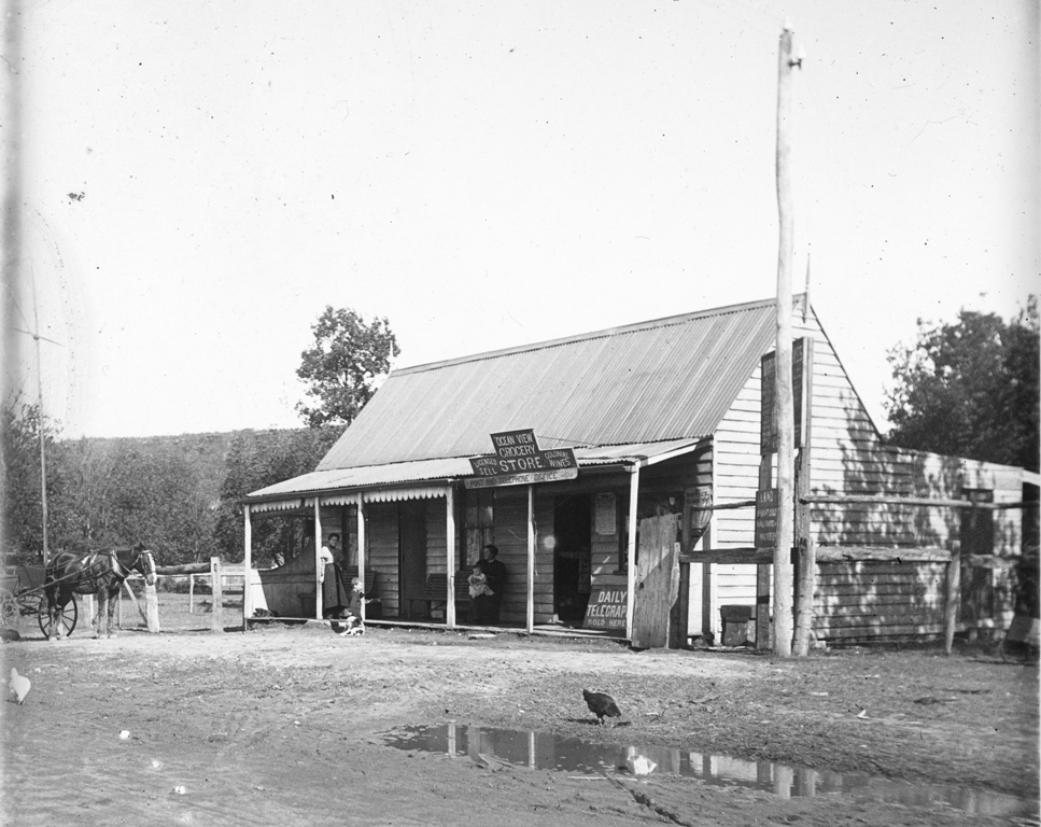
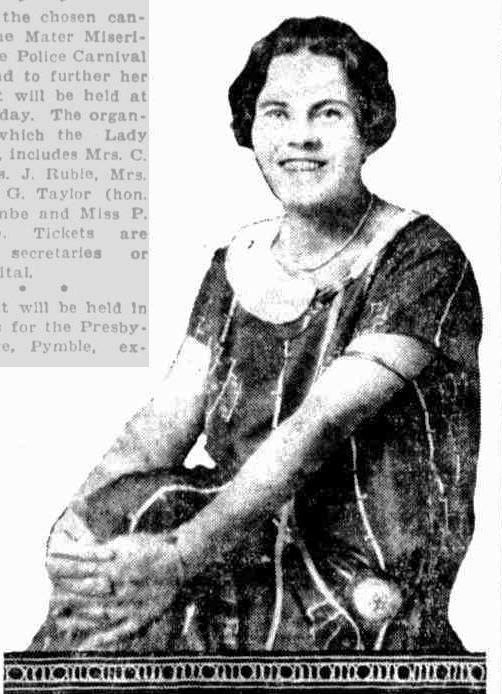
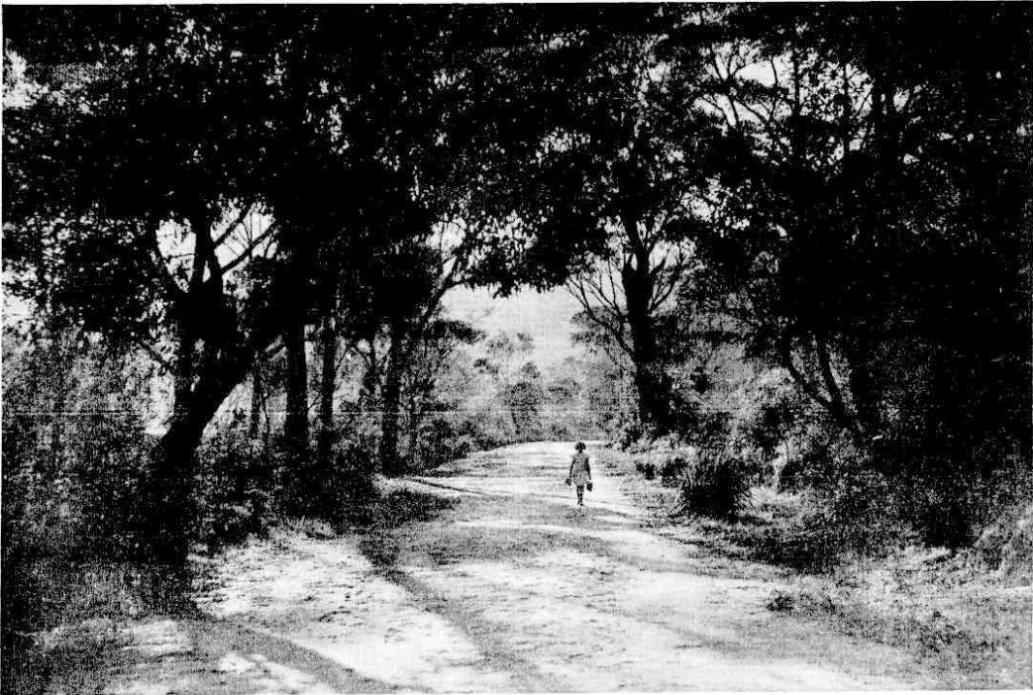
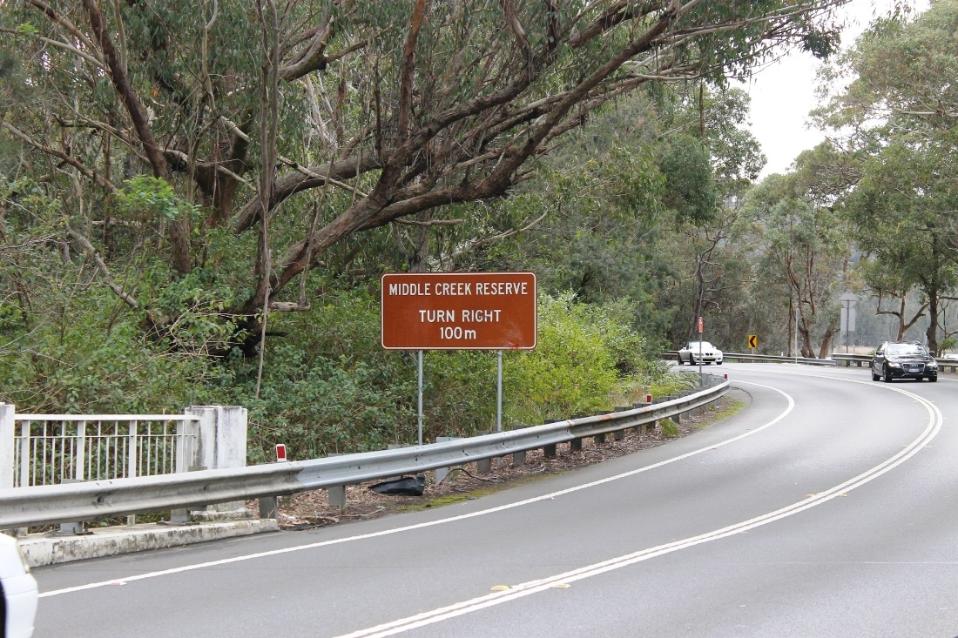
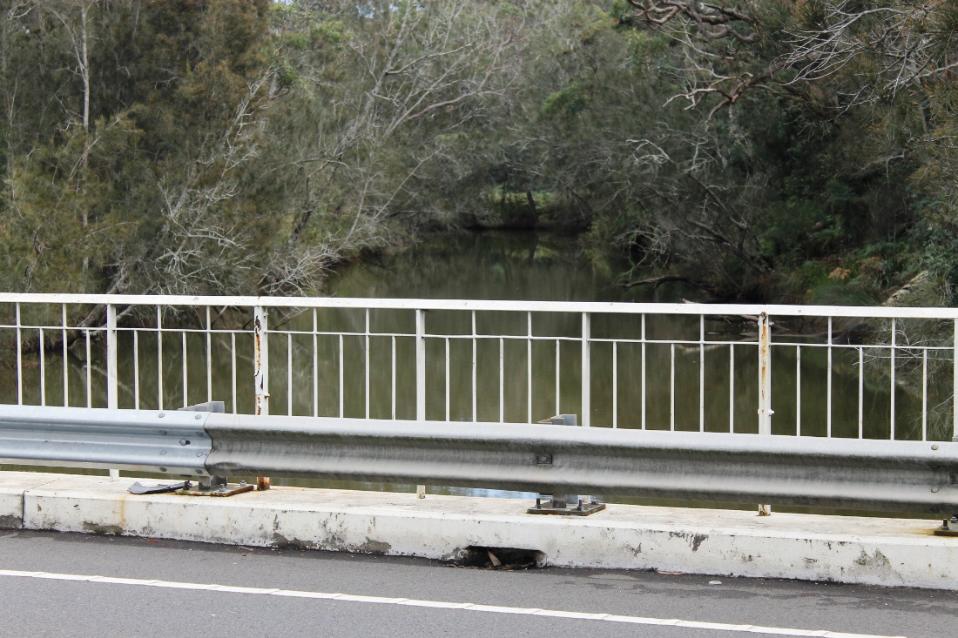
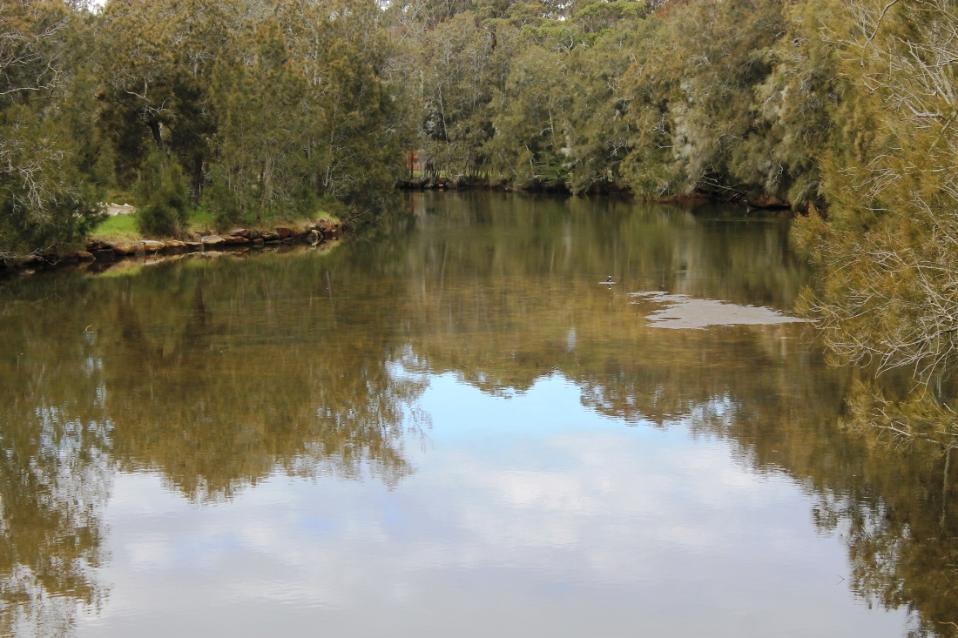
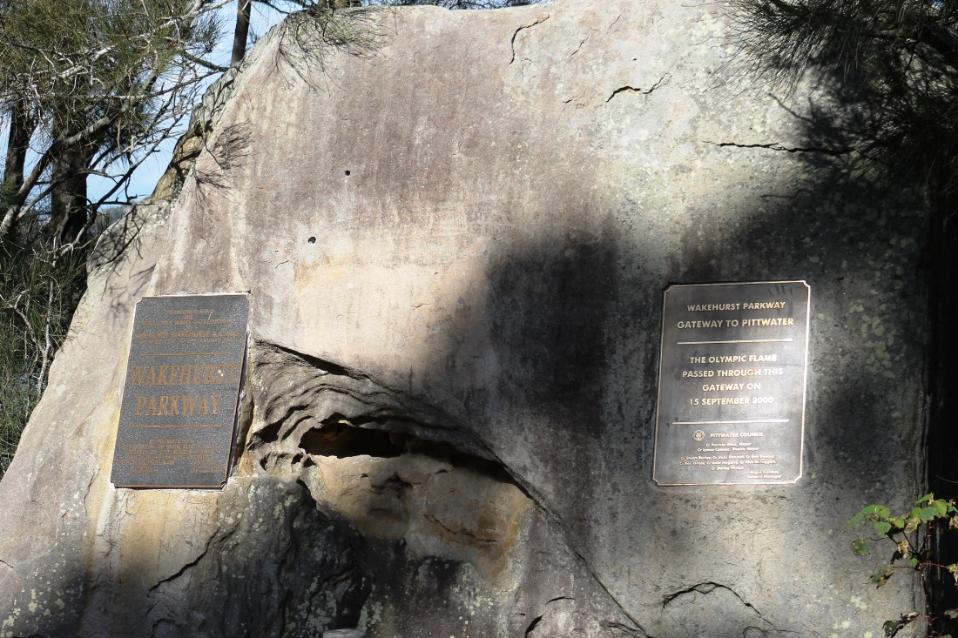
Previous History Pages:
Marie Byles Lucy Gullett Kookoomgiligai Frank Hurley Archpriest JJ Therry Sir Patrick Gordon Taylor Bowen Bungaree W. Bradley 1788 Journal Midholme Loggan Rock Cabin La Corniche La Corniche II Lion Island Bungan Beach Botham Beach Scarred Trees Castles in the Sand Dame Nellie Melba lunches at Bilgola Spring, 1914 First to Fly in Australia at North Narrabeen Mona Vale Golf Club's Annual Balls Governor Phillip camps on Resolute Beach Ruth Bedford Jean Curlewis Mollie Horseman Charlotte Boutin May Moore Neville W Cayley Leon Houreux Frederick Wymark Sir Adrian Curlewis Bilgola Heron Cove Mullet Creek Shark Point Woodley's Cottage A Tent at The Basin Collin's Retreat-Bay View House-Scott's Hotel Bilgola Cottage and House The First Pittwater Regatta Women Cricketers Picnic Filmed In Pittwater Governor Phillip's Barrenjoey Cairn Waradiel Season The Church at Church Point Governor Phillip's Exploration of Broken Bay, 2 - 9 March 1788 Petroglyths: Aboriginal Rock Art on the Northern Beaches Avalon Headland Landmarks Steamers Part I Pittwater Aquatic Club Part I Woody Point Yacht Club Royal Motor Yacht Club Part I Dorothea Mackellar Elaine Haxton Neva Carr Glynn Margaret Mulvey Jean Mary Daly Walter Oswald Watt Wilfrid Kingsford Smith John William Cherry George Scotty Allan McCarrs Creek Narrabeen Creek Careel Creek Currawong Beach Creek Bushrangers at Pittwater Smuggling at Broken Bay An Illicit Still at McCarr's Creek The Murder of David Foley Mona Vale Outrages Avalon Camping Ground Bayview Koala Sanctuary Ingleside Powder Works Palm Beach Golf Course Avalon Sailing Club Mona Vale Surf Life Saving Club Palm Beach SLSC Part I - The Sheds Warriewood SLSC Whale Beach SLSC Flagstaff Hill Mount Loftus Pill Hill Sheep Station Hill S.S. Florrie S.S. Phoenix and General Gordon Paddlewheeler MV Reliance The Elvina Florida House Careel House Ocean House and Billabong Melrose-The Green Frog The Small Yacht Cruising Club of Pittwater Canoe and I Go With The Mosquito Fleet - 1896 Pittwater Regattas Part I - Dates and Flagships to 1950 Shark Incidents In Pittwater The Kalori Church Point Wharf Bayview Wharf Newport Wharf Palm Beach Jetty - Gow's Wharf Max Watt Sir Francis Anderson Mark Foy John Roche Albert Verrills Broken Bay Customs Station At Barrenjoey Broken Bay Water Police Broken Bay Marine Rescue - Volunteer Coastal Patrol Pittwater Fire-Boats Prospector Powder Hulk at Towler's Bay Naval Visits to Pittwater 1788-1952 Pittwater's Torpedo Wharf and Range Naval Sea Cadets in Pittwater S.S. Charlotte Fenwick S.S. Erringhi P.S. Namoi S.Y. Ena I, II and III Barrenjoey Headland - The Lessees Barrenjoey Lighthouse - The Construction Barrenjoey Broken Bay Shipwrecks Up To 1900 Barrenjoey Light Keepers Douglas Adrian Ross Newport SLSC 1909 - 1938 Part I Overview North Narrabeen SLSC - The Formative Years First Naval Exercises by New South Wales Colonial Ships –The Wolverene at Broken Bay Bilgola SLSC - the First 10 years North Palm Beach SLSC A History of Pittwater Parts 1 and 4 Pittwater Regattas - 1907 and 1908 Pittwater Regattas - 1921 - The Year that Opened and Closed with a Regatta on Pittwater Pittwater Regatta Banishes Depression - 1933 The 1937 Pittwater Regatta - A Fashionable Affair Careel Bay Jetty-Wharf-Boatshed Gow-Gonsalves Boatshed -Snapperman Beach Camping at Narrabeen - A Trickle then a Flood Pittwater's Parallel Estuary - The Cowan 'Creek' RMYC Broken Bay Boathouse and Boatshed Barrenjoey Boat House The Bona - Classic Wooden Racing Yacht Mona Vale Hospital Golden Jubilee - A Few Insights on 50 Years as a Community Hospital Far West Children's Health Scheme - the Formation Years The First Scotland Island Cup, Trophy and Race and the Gentleman who loved Elvina Bay Royal Motor Yacht Club Broken Bay NSW - Cruiser Division History - A History of the oldest division in the Royal Motor Yacht Club Royal Motor Yacht Club Broken Bay Early Motor Boats and Yachts, their Builders and Ocean Races to Broken Bay, the Hawkesbury and Pittwater The Royal Easter Show Began As the Royal Agricultural Society of New South Wales The Mail Route to Pittwater and Beyond The Wild Coachmen of Pittwater - A Long and Sometimes Bumpy Ride on Tracks Instead of Roads The Fearless Men of Palm Beach SLSC's Surf Boats First Crews - A Tale of Viking Ships, Butcher Boats and Robert Gow's Tom Thumb 'Canoe' Furlough House Narrabeen - Restful Sea Breezes For Children and Their Mothers From Telegraphs to Telephones - For All Ships at Sea and Those On Land Mona Vale Training Grounds - From Lancers on Horses to Lasses on Transport Courses Fred Verrills; Builder of Bridges and Roads within Australia during WWII, Builder of Palm Beach Afterwards Communications with Pittwater Ferries To Pittwater A History of Pittwater - Part 4: West Head Fortress Pittwater's Lone Rangers - 120 Years of Ku-Ring-Gai Chase and the Men of Flowers Inspired by Eccleston Du Faur Early Pittwater Launches and Ferries Runs Avalon Beach SLSC - The First Clubhouse Avalon Beach SLSC The Second and Third Clubhouses From Beneath the Floorboards at Hyde Park Barracks Bungaree Was Flamboyant Andrew Thompson - 'Long Harry' Albert Thomas Black John Collins of Avalon Narrabeen Prawning Times - A Seasonal Tide of Returnings Oystering in the Pittwater Estuary - Oyster Kings and Pearl Kings and When Not to Harvest Oysters Yabbying In Warriewood Creeks Eeling in Warriewood's Creeks (Includes A Short History of community involvement in environmental issues/ campaigns in and around Narrabeen Lagoon - 1974 to present by David James OAM) Eunice Minnie Stelzer - Pittwater Matriarchs Maria Louisa Therry - Pittwater Matriarchs Manly's Stone Kangaroo, Camera Obscura, First Maze and 'Chute' - Fun Days in Sea Hazes from 1857 On A Salty Tale of the Kathleen Gillett – A Small Reminder and Celebration of Our 70th Sydney to Hobart Katherine Mary Roche - Pittwater Matriarch Sarah A. Biddy Lewis and Martha Catherine Benns Pittwater Matriarchs A Glimpse of the Hawkesbury.(1883) By Francis Myers. Illustrated by J C Hoyte Pittwater's New Cycle Track of 1901 Manly to Newport The Rock Lily Hotel Barrenjoey House The Pasadena Jonah's St Michael's Arch The First Royal Visitor to Australia: the Incident at Clontarf March 12th, 1868 Pittwater: Lovely Arm of the Hawkesbury By NOEL GRIFFITHS - includes RMYC Wharf and Clareville Wharf of 1938 + An Insight into Public Relations in Australia George Mulhall First Champion of Australia in Rowing - First Light-Keeper at Barranjuey Headland Captain Francis Hixson - Superintendent of Pilots, Lights, and Harbours and Father of the Naval Brigade The First Boat Builders of Pittwater I: the Short Life and Long Voyages of Scotland Island Schooner the Geordy The Marquise of Scotland Island Boat Builders of Pittwater II: from cargo schooners and coasters to sailing skiffs and motorised launches 130th Anniversary of Australia’s Sudan Contingent - Local Connections of the first Australians to Serve The Riddles of The Spit and Bayview/Church Point: sailors, boat makers, road pavers and winning rowers The Currawong: Classic Yacht VP Day Commemorative Service 2015 – at Avalon Beach RSL Cenotaph: 70th Anniversary Captain T. Watson and his Captain Cook Statues: A Tribute to Kindness Pittwater Reserves: The Green Ways; Hordern or Wiltshire Parks to McKay Reserve – From Beach to Estuary Pittwater Reserves, The Green Ways: Clareville Wharf and Taylor's Point Jetty Pittwater Reserves: The Green Ways Bilgola Beach - The Cabbage Tree Gardens and Camping Grounds - Includes Bilgola - The Story Of A Politician, A Pilot and An Epicure by Tony Dawson and Anne Spencer Pittwater Reserves - The Green Ways: Mona Vale's Village Greens a Map of the Historic Crown Lands Ethos Realised in The Village, Kitchener and Beeby Parks Pittwater Regatta Air Race Trophies: from 1934 and 1935 and The Pilot Who Saved William Hughes Pittwater Reserves: The Green Ways; Bungan Beach and Bungan Head Reserves: A Headland Garden Early Pittwater Paddlers, Oarsmen, Rowers and Scullers: The Green Family Elanora - Some Early Notes and Pictures The Stewart Towers On Barrenjoey Headland Early Pittwater Paddlers, Oarsmen, Rowers and Scullers: The Williams Family Early Cricket in Pittwater: A small Insight Into the Noble Game from 1880's On The Pacific Club's 2016 Carnival in Rio Fundraiser for Palm Beach SLSC Marks the 79th Year of Support Bert Payne Park, Newport: Named for A Man with Community Spirit Early Pittwater Paddlers, Oarsmen, Rowers and Scullers: The Fox Family Surf Carnivals in February 1909, 1919, 1925, a Fancy Dress Rise of Venus and Saving Lives with Surfboards Early Pittwater Paddlers, Oarsmen, Rowers and Scullers: The Paddon Family of Clareville Mermaid Basin, Mona Vale Beach: Inspired 1906 Poem by Viva Brock Early Pittwater Schools: The Barrenjoey School 1872 to 1894 The Royal Easter Show and 125th Celebration of the Hawkesbury Agricultural College: Farmers Feed Us! The Newport School 1888 to 2016 Pittwater's Ocean Beach Rock Pools: Southern Corners of Bliss - A History The Royal Botanical Garden Sydney Celebrates 200 Years in 2016 The Porter Family of Newport: Five Brother Soldiers Serve in WWI Church Point and Bayview: A Pittwater Public School Set on the Estuary The Basin, Pittwater: A Reprise: Historical Records and Pictures Lighthouse Cottages You Can Rent in NSW - Designed or Inspired by Colonial Architect James Barnet: Includes Historic 'Lit' Days records Bayview Days Ships Biscuits - the At Sea Necessity that Floated William Arnott’s Success Mona Vale Public School 1906 to 2012 St Johns Camden: 176th And 167th Anniversaries In June 2016 - Places To Visit Narrabeen Lagoon And Collaroy Beachfront: Storms And Flood Tides Of The Past Avalon Beach Public School - A History Muriel Knox Doherty Sir Herbert Henry Schlink Shopping And Shops In Manly: Sales Times From 1856 To 1950 For A Fishing Village Sir Edward John Lees Hallstrom Royal Prince Alfred Yacht Club's 150th Sailing Season Opening: A Few Notes Of Old A Few Glimpses Into Narrabeen's Past Beauties Dr. Isobel Ida Bennett AO Taronga Zoo 100th Birthday Parade: 1000 Reasons To Celebrate War Memorials: Manly, October 14, 1916 Avalon Beach Golf Links: Pittwater Fields of Dreams II War Memorials - Mona Vale, November 14, 1926 Annie Wyatt Reserve Palm Beach: Pittwater Fields of Dreams II Tumbledown Dick Hill Waratah Farm and Narrabeen Plums: Pittwater Fields of Dreams II Mark Twain, J.F. Archibald And Henry Lawson - Did They Go Fishing At Narrabeen In The Spring Of 1895?: Probably! Bayview Baths Centenary Celebration in November 2016 hosted by Bayview-Church Point Residents Association Dr. Jenny Rosen's Historical Timeline Palm Beach RSL - Club Palm Beach Celebrating 60 Years Early Years At Narrabeen: The Plane Sailing Day Of 1944 The Five Ways- Six ways Junction; Kamikaze Corner - Avalon Bilgola RPAYC Season on Pittwater and coming of Jubilees in Summer of 1938 Local Explorers’ Modern Day Discovery - Governor Phillip’s First Landing site, Campsite and contact with Local Aborigines in Pittwater: The Case for West Head Beach Rendezvous Tea Rooms Palm Beach: links with 1817 and 1917: Palm Beach Stores and Fishermen St Cloud's Jersey Stud: Elanora Heights: Pittwater Fields of Dreams Roderic Quinn's Poems And Prose For Manly, Beacon Hill, Dee Why And Narrabeen A Historic Catalogue And Record Of Pittwater Art I – Of Places, Peoples And The Development Of Australian Art And Artists: The Estuary Celebrating World Radio Day: The Bilgola Connection With The Beginnings Of Radio In Australia Emile Theodore Argles - champion of all Australians without a Voice - a very funny Satirist, Manly Poet and Pittwater Prose Writer and Litterateur Sydney Harbour Bridge Celebrates 85th Birthday: A Few Pittwater Connections Victor James Daley: A Manly Bard And Poet who also came to Pittwater and the Hawkesbury Let's Go Fly A Kite !: Palm Beach Whistling Kites Inspire sharing How to Make Standard, Box and Whistling Boy Kites - school holidays fun with a bit of Australian and Narrabeen history Clifton Gardens Mosman: An Eternal Green and Saltwater Space, and Of Many Captains Historic Catalogue And Record Of Pittwater Art I: Coastal Landscapes and Seascapes The Bayview Tea Gardens 1920 to 1923 When Run By Thomas Edward And Annie Newey (Nee Costello) An Australian and RPAYC Commodore Aboard an America's Cup Challenger of 1908 and 1914 Henry Lawson - A Manly Bard and Poet: on his 150th Birthday Historic Catalogue and Record of Pittwater Art I: Artists and Artists Colonies Opportunity To Visit Submarine War Grave Renews Memories Of 75 Years Ago Early Bayview - insights courtesy Don Taylor and Margaret Tink Retracing Governor Phillip's Footsteps Around Pittwater: The Mystery Of The Cove On The East Side Early Pittwater Surfers – Palm Beach I: John (Jack) Ralston and Nora McAuliffe Patrick Edward Quinn: A Manly Prose writer who gave us A Run To Pittwater (1889) and Songs for the Federation of Australia Avalon Beach North Headland Indian Face 'Falls': An Everchanging Coastline Nautical Treasure In Suburbia Pittwater: Where the Wild Flowers Are 1917 to 2017 Narani, Captain Cook Celebrations At MVPS And Elvina Bay Memories - 1970s Early Pittwater Surfers – Palm Beach I: Alrema Becke Queen of Palm Beach The Beachcombers Surfboard Riding Club: Palm Beach, NSW - 1959 to 1961 Year Dated Beer Bottles Found at Taylors Point Early Pittwater Surfers: Avalon Beach I - 1956: The Carnival That Introduced The Malibu Surfboard and Being Able To SurfAcross A Wave Face - Reg Wood Anecdotes Mona Vale SLSC To Be Completely Renewed + A Few Insights from the Pages of the Past The Firecracker That Closed Narrabeen Hotel By Ken Lloyd (Savalloyd) + Narrabeen Hotel Licence Transfer Trail Traces Of WWII Coast Watchers Found On Bangalley Headland - 1942 Early Warriewood SLSC insights per Norman Godden + Extras The Macphersons of Wharriewood and Narrabeen: the photo albums of William Joseph Macpherson Angophora Reserve Avalon 1938 Dedication Avalon Preservation Association History by Geoff Searl Pittwater Summer Houses: a 1916 Palm Beach Cottage and Palm Beach House Pittwater YHA: Some History WWI Historian Presents New Film On The Beersheba Charge At Avalon Beach Historical Society Meeting Newport's Bushlink 'From The Crown To The Sea' Paths: Celebrating Over 20 Years Of Community Volunteer Bushcare Results Pittwater Fishermen: The Sly Family Narrabeen Exploits and Manly Community Contributors: The First Surfboat at Manly Beach Women In The Surf Life Saving Movement As Life Savers: From At Least 1910 Locally - Awarded Medals For Saving Lives From 1880 In NSW Windsor Bridge: Planned Destruction Of Historic Link With A Pittwater Connection The Rise Of The Cruising Season: A Look At Some Early Australian sailers and Local Visitor Beauties Pittwater Fishermen: Barranjoey Days Polo By The Sea 2018: Over A Hundred Years Of Loving This Game In Pittwater Australia Day Regatta Began As Anniversary Day Regatta Black Bakelite Telephone: Early Pittwater Phone Numbers Hy-Brasil, Avalon Beach - Pittwater Summer Houses Ferry Names for Emerald Class: The Gibbs-Turner Original Magic Button Pittwater Summer Houses: A Tent At Palm Beach's Governor Phillip Park 'Neath Barrenjoey Pittwater Summer Houses: The Cabin, Palm Beach - The Pink House Of The Craig Family Manly's Early Sand Sculptors: How Pennies Can Become Pounds and Found A New Art Retracing Governor Phillip's Footsteps Around Pittwater: The Mystery Of The Cove On The East Side by Geoff Searl and Roger Sayers 230th Anniversary Edit March 2018 Black-Necked Stork, Mycteria Australis, Once Visited Pittwater: Pair Shot in 1855 Butter Churns: Pittwater Dairies The Drainage System In Thompson Square, Windsor Sydney Royal Easter Show 2018 Show Stopper Beer Brewed By Modus Operandi Mona Vale Extends Locals Input Into RAS Annual Celebration Of Local Products Sydney's Royal Easter Show Showbag Began As An Australian Sample Bag Pittwater Fishermen: Great Mackerel, Little Mackerel (Wilson's Beach - Currawong) and The Basin Motor Car Tours To And In Pittwater Show Us The Way This Place Once Was Some Bayview Memories: The Lloyd Family Tarramatta Park, Mona Vale 1904 The Collaroy Paddle Steamer: New Ephemera Added To Public Accessible Records - Her Connections To Pittwater The Roads And Tracks Of Yesterday: How The Avalon Beach Subdivisions Changed The Green Valley Tracks Australian Sailing's Barranjoey Pin Program; some insights into this Pittwater Yacht and owner, Sir W Northam who won Australia’s first Olympic sailing gold medal at the 1964 Tokyo Olympic Games Avalon Beach Historical Society’s 9th Great Historic Photographic Exhibition: Thousands Of Stories Made Accessible